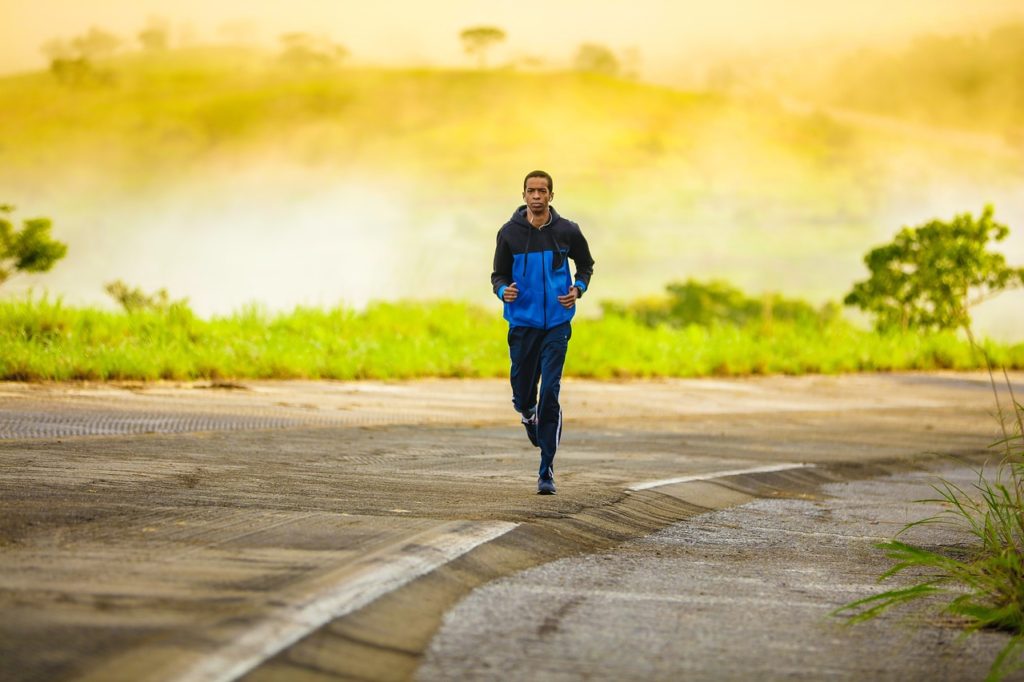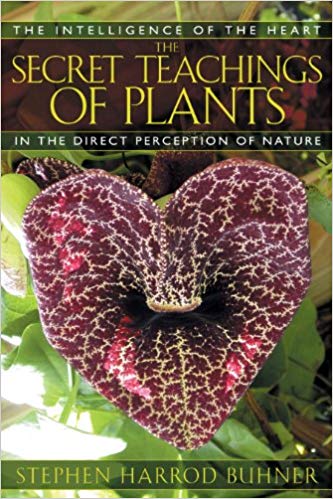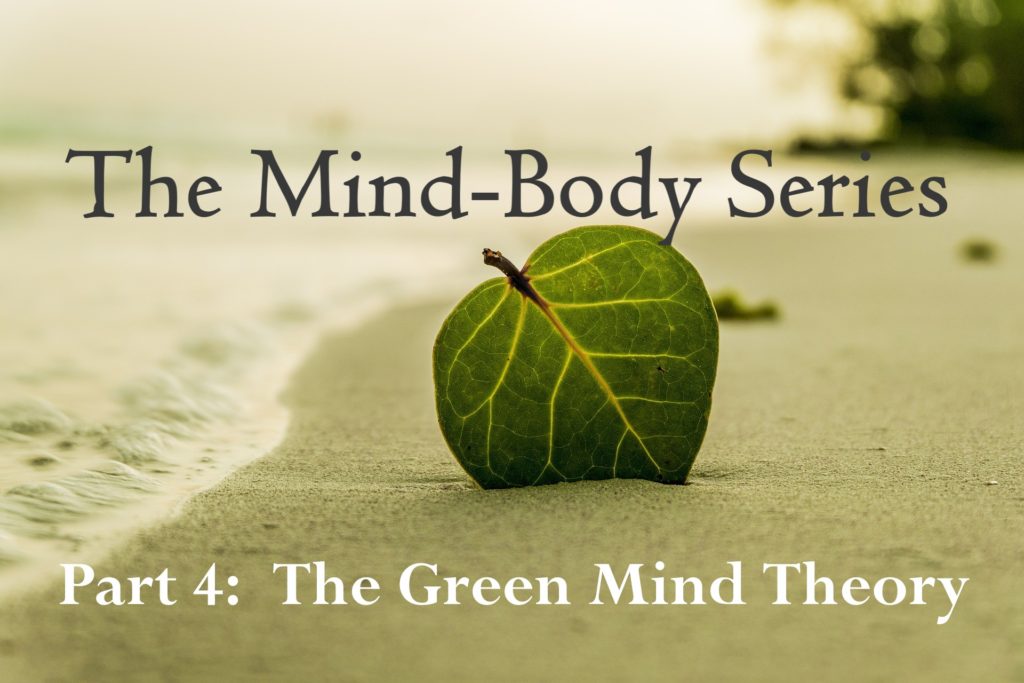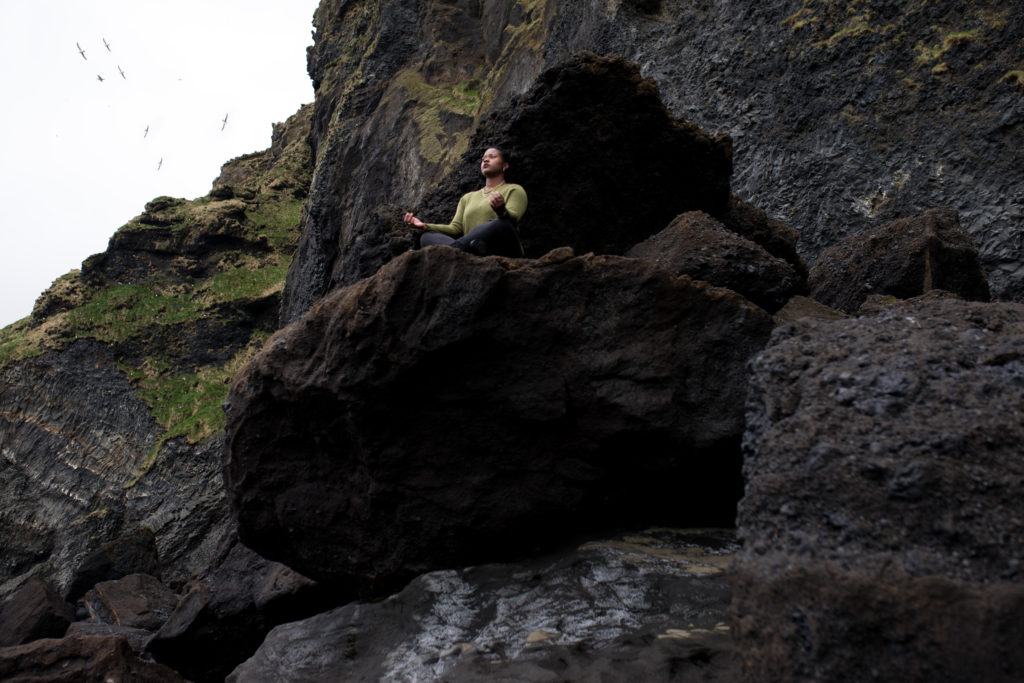Welcome to Part 4 of the Mind-Body Series! In Part I of the series, we addressed the role of the limbic system and the HPA-axis in mind-body medicine and overall health. In Part 2 of the series, we addressed the role of the vagus nerve and the social nervous system in mind-body medicine and overall health. In Part 3 of the series, we addressed the roles of the vagus nerve, the enteric nervous system, and the gut microbiome in emotional, mental, and physical health.
This week, I will be discussing how the natural environment, or a lack thereof, has a direct impact on our health and healing on all levels – spiritually, emotionally, mentally, and physically.
Let’s first begin by exploring a concept known as “earthing”…
What exactly is “earthing”?

Earthing, also known as grounding, refers to direct skin contact with the earth’s surface (i.e. with bare feet or hands). Modern research has proposed that direct skin contact with the Earth allows free electrons from the Earth’s surface to spread over and into the body through the fascial network, where they potentially have antioxidant effects.
This fascial network is a body-wide communication system located between the skin and muscles, and extending deep within the body surrounding the internal organs and bones. It serves as a shock-absorber, helps to hold our organs in place, and assists with the movement of the musculoskeletal system. It includes loose connective tissue (fascia), the extracellular matrix, and the cytoskeleton, which is the “nervous system” of the cell. Fascial proteins, like collagen, are being recognized as semi-conductors as they are very similar in chemical structure to organic polymer found in solar cell batteries. They possess low electrical resistance, and they also contain organic liquid crystal chemical properties, which exhibit double refractive light properties, known as photo-luminescence.

This fascial communication system is widely known as the meridian system in traditional Chinese medicine. This was proposed in 2008 by a Chinese researcher, who concluded that the fascia was the most likely structure where meridians exist because properties, such as, low electrical resistance, high acoustics, and photo-luminescent and thermal lines are only found in tissue with semi-conducting properties.
So, overall, due to its potential antioxidant effects, earthing has shown to speed wound healing, decrease inflammation, and reduce blood viscosity. It has also shown to improve sleep and circadian rhythms, reduce pain, reduce stress, increase heart rate variability (or increase resilience to stress as discussed in Part I), and shift the body from a sympathetic nervous response to a parasympathetic one. As a result of all of this, it may be helpful in the prevention and treatment of mental illness, autoimmune disease, and chronic inflammatory diseases.
So, what exactly is the Green Mind Theory?
The Green Mind Theory is a “new” theory that was first introduced in 2017 by a group of researchers in the International Journal of Environmental Research and Public Health. They propose that the mind, brain and human body have a reciprocal relationship with their natural and social environments. The problem is that now we spend less time outdoors interacting with the natural world even though our brains are hard-wired for it. So, let me explain…
The earth has a physical body, but it also contains electro-magnetic fields that affect and interact with that physical body. Like the earth, we not only have a physical body, but each individual has his/her/their own set of electro-magnetic fields that affect their overall well-being. So, having physical contact with natural elements (aka “earthing” or “grounding”) creates a physiological response in our bodies by allowing the exchange of free electrons through our fascia. It also creates a measurable response within non-physical, energetic fields that exist within and around our bodies. Quantum physicists refer to these fields as “bio-energetic fields”, however, these fields are commonly known in various indigenous spiritual traditions as “etheric bodies”, “astral bodies”, “chakras”, “orishas”, “auras”, etc. If you’ve ever wondered how electro-magnetic fields from cell phones and X-Rays can affect the human body – this is how. If you’ve ever experienced a physical reaction upon walking into a room that’s full of emotional tension – this is why. The bio-energetic fields within and around you are interacting with those in your external environment. I will delve into bio-energetic fields and energy healing in a future post – but back to the green mind theory…
Our health is a direct reflection of the health of our natural and social environments. At the same time, our natural and social environments are a direct reflection of our internal environments (body, mind, emotion, and spirit). So, if the external world is a mess, we also become a mess. We become sick. If we are a mess, our relationship with our social groups and the natural world become unhealthy and unsustainable.
All in all, this theory proposes that implementing therapy that requires being and doing activities in nature will restore this reciprocal relationship and restore our health and overall well-being.
This theory is founded upon research on green exercise and nature-based therapies, neuroscience and brain plasticity (the creation of new neurons upon learning), indigenous cultures and their spiritual traditions, and behaviors in material consumption.
The green mind theory separates brain function into three categories:
- The red brain (sympathetic) – This represents the bottom brain stem (also known as the reptilian brain), which is the oldest part of the brain. It is fast-acting, involuntary, impulsive, emotion-driven, and the initiator of “fight and flight” behaviors.
- The blue brain (parasympathetic) – This represents the top brain cortex. It is slow-acting, voluntary, calming, as well as, the center for learning and the initiator of “rest and digest” behaviors.
- The green mind – It is the optimal state of being. In this mode of being, the parasympathetic blue brain is mostly activated, with steady mild sympathetic (red brain) activation and occasional spikes in the sympathetic response.
Over-stimulation of the red brain, which is common in modern consumerist culture, negatively impacts the digestive, immune, cardiovascular, and endocrine systems, as discussed in Part 1. For example, obesity, type 2 diabetes, cardiovascular disease, mental illness, and dementia are all linked to a lack of physical activity, exposure to natural spaces, and community – among other factors, such as, a standard American diet, improper sleep hygiene, environmental toxins, etc.
Listed below are the differences between the mind of the average person living in consumerist culture and the green mind:

The Modern Mind in Consumerist Culture
- Too many daily spikes in the red brain
- Overwhelming mental chatter leading to increased stress, suffering and anxiety
- An over-active sympathetic nervous response and HPA-axis, causing secondary health problems
- A tendency towards mental illness
- An inability to feel and express empathy due to an over-active red brain
- An inactive, sedentary lifestyle
- Disconnection from nature and green places
- A belief that some conditions and diseases are only treatable through medications (or not at all)
- A tendency towards increased material consumption for consolation

The Green Mind
- Balance between the blue and red brain
- Less mental chatter and less suffering
- Parasympathetic nervous system activates blue brain to engage in self-healing
- A tendency towards health and holistic well-being
- More social and empathetic
- Regularly active
- Regular exposure to nature and green spaces (especially as “green exercise”)
- Open to mindfulness-based therapies and nature-therapy to treat some conditions and diseases
- A tendency towards non-material consumption and/or sustainable material consumption for well-being and a long life
What is Green-Exercise & Nature-Based Therapy?
Green exercise refers to physical activity that takes place outdoors in natural environments. For those who are unable to physically move and exercise, looking at nature, or being in nature will suffice.

Outdoor exercise provides special benefits compared to exercising in synthetic environments – primarily related to psychological state. Outdoor exercise makes people happier, less fatigued and angry, more tranquil and relaxed, and gives a more lasting energy boost compared to indoor exercise. Five minutes of green exercise per day is likely to boost self-esteem and mood. Looking at green space alone can decrease stress-related hormones, such as, cortisol, epinephrine, and norepinephrine.
Being in green spaces has been shown to enhance cognitive function, reduce stress, improve sensory and motor skills in both children and adults, and ameliorate symptoms of ADHD in children. Exposure to natural sunlight combined with physical activity provides the body with plenty of Vitamin D. It is also thought to increase serotonin levels in our bodies, which can improve feelings of well-being and happiness.

Green exercise is experienced as being more restorative and is more likely to increase a person’s frequency of exercise compared to indoor exercise. It also incorporates different muscle groups than structured indoor workouts. For example, trail running and hiking are more difficult than exercising on a treadmill. The uneven terrain requires more lateral movements and stabilizing muscles throughout our ankles, knees, and abdomen.
Now, all forms of exercise are good for you. The obvious question is why outdoor locations have this extra benefit. I’ll give you a hint – we talked about it just a second ago:
“Having physical contact with natural elements (aka “earthing” or “grounding”) creates a physiological response in our bodies by allowing the exchange of free electrons through our fascia. It also creates a measurable response within non-physical, electro-magnetic fields that exist within and around our bodies.”
There is also something unique about simply being outside, even without exercising, that brings us back to the present moment of our feelings and body sensations. When outside, it is easier to let go of ruminating thoughts and worries, inner dialogues and daily mental stresses, and just feel our bodies in tandem with nature – just like our ancestors who lived in close proximity with nature for millennia. It brings us more in touch with ourselves. It enhances our sense of connection – a feeling of “oneness” – between ourselves and other people, animals, plants, trees, and the earth itself.

Stephen Buhner beautifully captures this shared interconnectedness in his book, “The Secret Teachings of Plants”:
“Our sensory organs are meant to perceive the world. The sensory capacities of the human ear were shaped by the sounds of the world, our smell formed through long associations with the delicate chemistries of plants, our touch by the nonlinear, multidimensional surfaces of Earth, our sight by the images that constantly flow into our eyes. Human senses emerged from immersion in the world. They are part of Earth.”
The Similarities between the Green Mind Theory and the Traditional Healing Wisdom of the African Diaspora
ALL traditional African belief systems are centered around nature and the interconnectedness of all things from humans to the air we breathe, the rocks we see, the insects and animals we encounter, the plants we consume and use for medicine, and more. In African-based traditions around the world, the ill are not segregated in a room. They are traditionally immersed in natural environments because nature IS the ultimate healer. To add, healing is not just seen as an individual responsibility. Healing is also seen as a collective effort that requires the ill to be fully embraced by community members.
Along with herbal treatment, ceremonies and rituals are performed by the entire community to provide further social and spiritual support to the ill by invoking healing energy from Spirit/Creator, the ancestors, and the earth. In Yoruba, Fulani, and Malagasy cultures, drum and dance rituals are performed in natural spaces for healing. In the old Southern African-American rootwork tradition, communal gatherings, such as, ring shout and prayer circles were all utilized in natural settings for healing.
What are some nature-based therapies that help build a green mind?
- walking in nature
- gardening
- fishing
- rock climbing
- bike riding
- horse riding
- outdoor tai chi
- outdoor qi gong
- outdoor yoga
- a day at the beach
- outdoor swimming
- surfing
- watching sunsets or waves
- dog walking
- bird watching
- jogging/running in a park and more…
**The only possible dangerous side effects of this therapy are things like air pollution, frostbite, urban traffic while biking, and jogging at night in unsafe neighborhoods. But assuming you are not taking on any of these risks, it is important to note that ALL natural environments are beneficial, even if it is just for 5 minutes per day: urban parks, national parks, small to large landscapes, domesticated gardens, farms, wild terrains, etc. They have both short- and long-term positive effects on groups that are under mental stress – basically ALL OF US. Research has shown that the more connected to nature a person is, the greater is his/her/their satisfaction with life.**
What are some social-based therapies that help build a green mind?
- drama groups
- choir groups
- dance groups
- coffee meetups
- volunteering
- prayer groups
- any other spiritual-based groups
- book clubs
- fairs
- parades
- carnivals
- horticulture societies
- music festivals
- mudracing
- bonfires and more…
**It is important to note that all of the listed activities are low in material consumption yet deliver AMAZING health benefits.**
My services will be available beginning this October at The Center: A Place of Hope in Washington, which is an in-patient treatment facility for trauma, various mental illnesses, eating disorders, and addictions. For more information about the services I will be offering, or how to arrange accommodations at The Center, you may contact me through my website’s Contact Page (click here).
Be sure to like and follow my facebook page and/or my instagram page to stay updated for the last segment of the Mind-Body Series, “The Neurobiology of Spirituality”, next week where I will be discussing how having a connection to something greater than one’s self (or a lack thereof) affects brain physiology and brain chemistry. I will also discuss how establishing a spiritual practice (whatever that looks like for the individual) can not only benefit one’s spiritual health, but also one’s emotional, mental, and physical well-being.
Until next time,
Dr. Richmond
Remaining Posts of the 5-Part Mind-Body Series:
- The Neurobiology of Spirituality (Next Week)
References
- Askren MK, Berman MG, Burson A, Deldin PJ, Gotlib IH, Jonides J, Kaplan S, Kross E, Krpan KM, Sherdell L. (2012). Interacting with nature improves cognition and affect for individuals with depression. Journal of Affective Disorders, 140(3), 300-305. doi: 10.1016/j.jad.2012.03.012
- Barton J, Griffin M, Pretty J. (2012). Exercise-, nature- and socially interactive-based initiatives improve mood and self-esteem in the clinical population. Perspectives in Public Health, 132(2), 89-96. doi: 10.1177/1757913910393862
- Barton J, Pretty J, Rogerson M. (2017). Green Mind Theory: How Brain-Body-Behaviour Links into Natural and Social Environments for Healthy Habits. International Journal of Environmental Research and Public Health, 14(7), 706. doi: 10.3390/ijerph14070706
- Brown R, Chevalier G, Oschman JL. (2015). The effects of grounding (earthing) on inflammation, the immune response, wound healing, and prevention and treatment of chronic inflammatory and autoimmune diseases. Journal of Inflammation, 8, 83-96. doi: 10.2147/JIR.S69656
- Endvelt R, Plaut P, Tesler R. (2018). The Effects of an Urban Forest Health Intervention Program on Physical Activity, Substance Abuse, Psychosomatic Symptoms, and Life Satisfaction among Adolescents. International Journal of Environmental Research and Public Health, 15(10), 2134. doi: 10.3390/ijerph15102134
- Ikei H, Kagawa T, Lee J, Miyazaki Y, Park BJ, Song C. (2018). Psychological Benefits of Walking through Forest Areas. International Journal of Environmental Research and Public Health, 15(12). doi: 10.3390/ijerph15122804
- Mitchell RJ, Pearce JR, Richardson EA, Shortt NK. (2015). Neighborhood Environments and Socioeconomic Inequalities in Mental Well-Being. American Journal of Preventive Medicine, 49(1), 80-84. doi: 10.1016/j.amepre.2015.01.017 O’Brien L. (2018). Engaging with and Shaping Nature: A Nature-Based Intervention for Those with Mental Health and Behavioural Problems at the Westonbirt Arboretum in England. International Journal of Environmental Research and Public Health, 15(10), 2214. doi: 10.3390/ijerph15102214


